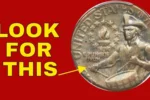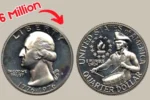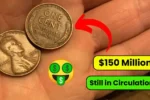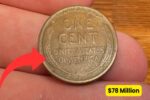The Rare Bicentennial Quarter Valued at $1 Million, Still in Circulation
Let’s face it—how often do we really think about the spare change jangling in our pockets or lying at the bottom of our purses? Probably not much. But what if one of those ordinary-looking quarters was actually worth a small fortune—maybe even a million bucks? Sounds like a fantasy, right? Yet, there’s one special coin that’s turning heads in the collecting world: the Bicentennial Quarter from 1976. Minted to mark America’s 200th birthday, this limited-edition coin isn’t just a nostalgic reminder of our past—it could be your surprising ticket to a serious payday.
An Unforgettable Quarter Design
In 1976, to commemorate the nation’s bicentennial, the U.S. Mint introduced a unique lineup of coins—and the quarter definitely stole the show. While the front of the coin still features George Washington’s familiar profile, there’s a twist: instead of a single year, it reads “1776–1976,” celebrating two centuries of American freedom.
Flip it over, and you’re met with a design that’s completely distinct from the standard quarter. A colonial drummer boy stands confidently at the center, with a flaming torch and a ring of 13 stars representing the original colonies. It’s an iconic and patriotic design that truly captures the spirit of the celebration.
These quarters were minted in three locations: Philadelphia (no mint mark), Denver (D mint mark), and San Francisco (S mint mark). The San Francisco versions include special silver-clad and proof coins, making them particularly collectible. Fun fact: the design was actually selected through a nationwide art contest and was created by Jack L. Ahr, proving that everyday Americans played a role in shaping this coin’s legacy.
Why Some Bicentennial Quarters Are Worth a Fortune
Now here’s where it gets interesting—not all 1976 quarters are created equal. While the majority are still only worth their 25-cent face value, a few rare and exceptional versions have stunned collectors with their skyrocketing prices. Believe it or not, one rare specimen is rumored to have fetched $1 million.
So, what should you be keeping an eye out for?
Minting Errors – Look for things like double images, off-center strikes, or unusual markings. These imperfections can transform a normal coin into a prized collector’s item.
Pristine Condition – Coins that were never circulated and remain in perfect shape can be highly valuable, sometimes selling for hundreds of dollars.
Silver-Clad Versions – Produced in San Francisco, these contain 40% silver and are popular among collectors. They’re not found in regular pocket change but may appear in commemorative coin sets.
The Legendary $2.5 Billion Bicentennial Quarter Myth
There are wild rumors circulating about a Bicentennial Quarter supposedly worth $2.5 billion. While this claim is more fantasy than fact, it speaks to the intrigue and buzz surrounding these coins. Still, some examples with rare features or historical quirks have legitimately sold for life-changing amounts.
What Are They Worth in Today’s Market?
So what kind of money are we talking about? Here’s a quick value guide for the 1976 Bicentennial Quarter:
Circulated Versions – Typically valued between $0.25 and $0.50. Cool to find, but not your ticket to early retirement.
Uncirculated Examples – Depending on their quality and shine, these can command prices of $100 or more.
40% Silver Editions – Usually go for $10 to $50, especially if they’re part of a proof or mint set.
Error Coins – These rare misprints can fetch thousands from serious collectors.
Ultra-Rare Editions – One elusive coin reportedly sold for $1 million. Yes, someone paid that much!
Still in Circulation? Surprisingly, Yes
Though they haven’t been minted in decades, these quarters are still out there. You might stumble across one in your change, tucked in a forgotten drawer, or hiding in an old piggy bank. They’re a little piece of history that could still be hiding in plain sight.
The takeaway? Don’t overlook your spare change. That seemingly ordinary 1976 quarter might actually be a hidden gem.
How to Identify a Valuable Bicentennial Quarter
If you’re ready to do some treasure hunting, here are a few quick tips:
Inspect the Edges – Silver quarters have a solid silver edge with no copper stripe. If you see a copper line, it’s a standard version.
Look for the “S” Mint Mark – San Francisco-minted coins, especially silver or proof editions, carry more value.
Search for Errors – A small magnifying glass might help you spot rare errors or design flaws.
Weigh It – A regular quarter weighs 5.67 grams, while silver versions come in at about 5.75 grams.
Preserve It – If you find a coin that seems promising, store it in a protective case to keep it in top shape.
Final Word A Hidden Treasure in Your Change?
The Bicentennial Quarter is more than just pocket change—it’s a symbol of American history and, for some lucky folks, a golden (or silver!) opportunity. Most of these coins are only worth face value, but certain rare ones could bring in hundreds, thousands, or even that elusive million-dollar payout.
So the next time you receive change at the store, take a moment to check those dates. That humble 1976 quarter might just be the rare collectible you never knew you had.











